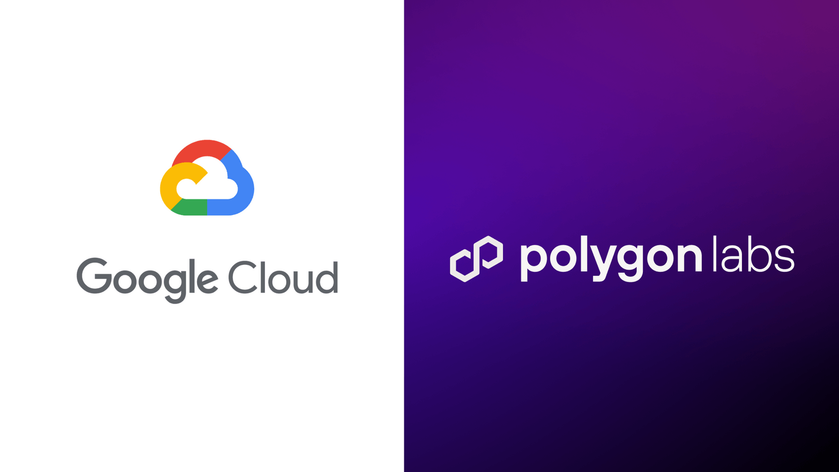Austin, Texas, and Singapore, April 27, 2023 – Today at Consensus 2023, Google Cloud and Polygon Labs announced a multi-year strategic alliance to accelerate adoption of core Polygon protocols, including Polygon PoS, Polygon Supernets, and Polygon zkEVM, with Google Cloud infrastructure and developer tools. Together, they are embarking on engineering and go-to-market initiatives to make it easier for developers to build, launch, and grow their Web3 products and decentralized applications (dApps) on Polygon protocols.
Google Cloud to become the strategic cloud provider for Polygon protocols
To help developers overcome the time-intensive processes and costly overhead associated with provisioning, maintaining, and operating their own dedicated blockchain nodes, Google Cloud will bring Blockchain Node Engine, its fully managed node hosting service, to the Polygon ecosystem, further diversifying cloud services across the Polygon ecosystem. Once Blockchain Node Engine support for Polygon is made available, developers using Blockchain Node Engine will no longer have to worry about configuring or running their Polygon PoS nodes; they can instead focus on growth while retaining complete control over where nodes are deployed.
The Google Cloud Marketplace is already offering developers simple one-click deployment of a Polygon PoS node to power their dApps quickly and easily. The Polygon blockchain dataset was listed on the Google Cloud Marketplace under the Google Cloud Public Dataset Program in 2021. With that dataset, developers can combine their use of BigQuery, Google Cloud’s serverless enterprise data warehouse, and Polygon PoS or Polygon Supernets to analyze real-time on-chain and cross-chain data to inform decision-making.
Polygon Supernets is a dedicated app-chain providing enterprises and other developers of specific applications with the ability to customize and extend blockspace based on their needs. By the end of Q3, Polygon Labs will enable one-click developer net (DevNet) deployments on Google Cloud. Developers who are interested in deploying a Supernet will be able to provision a three to five node network with a simulated bridge in their virtual private cloud (VPC) for the purpose of rapid evaluation of the Supernets stack for their project.
Optimizing Polygon zkEVM scaling performance
Polygon zkEVM is an Ethereum Virtual Machine (EVM) equivalent scaling solution that integrates seamlessly with existing Ethereum functions, smart contracts, developer tools, and wallets by leveraging zero-knowledge proofs, an advanced form of cryptography. Polygon zkEVM benefits decentralized finance (DeFi) developers and users by enabling faster and cheaper transactions, leading to increased efficiency and lower costs. With Google Cloud as a cloud provider, and Searce facilitating technical implementation, Polygon Labs will advance its zero-knowledge innovation strategy and enable Web3 developers to avoid trade-offs between three key properties: decentralization, scalability, and security. Initial tests to run Polygon zkEVM’s zero-knowledge proofs on Google Cloud, for instance, resulted in significantly faster and cheaper transactions as compared to the existing setup.
Fuelling the next wave of Web3 ecosystem innovation
To provide founders in the Polygon ecosystem with more resources to scale their innovative Web3 products and dApps, eligible early-stage startups backed by Polygon Ventures can now receive newly announced Web3-specific benefits through the Google for Startups Cloud Program. This includes up to US $200,000 in credits for their Google Cloud and Firebase usage for up to two years, early access to Google Cloud’s Web3 products and roadmap, invitation to a gated Discord channel with Google Cloud’s Web3 product and engineering teams, free access to hands-on learning labs focused on Web3 and the latest Google Cloud technology, and more.
“Google Cloud supporting all of the Polygon protocols is a step in the right direction to help onboard more people into Web3" said Ryan Wyatt, President, Polygon Labs. “Today's announcement with Google Cloud aims to increase transaction throughput enabling use cases in gaming, supply chain management, and DeFi. This will pave the way for even more businesses to embrace blockchain technology through Polygon.”
“The industry is experiencing a flight to quality as corporations seek to minimize risk when exploring new possibilities in Web3. Building on our work over the past few years, Google Cloud is helping the industry achieve escape velocity by directing our engineering efforts toward areas like improving data availability and enhancing the resilience and performance of scaling protocols like zero-knowledge proofs,” said Mitesh Agarwal, Managing Director, Customer Engineering and Web3 Go-to-Market, Asia Pacific, Google Cloud. “Alongside Searce as our implementation partner, we look forward to deepening our collaboration with Polygon Labs to deliver the enterprise-ready Web3 infrastructure and developer-friendly tools that businesses need to offer fast, frictionless, and secure access to dApps for consumers.”
About Google Cloud
Google Cloud accelerates every organization's ability to digitally transform its business. We deliver enterprise-grade solutions that leverage Google's cutting-edge technology – all on the cleanest cloud in the industry. Customers in more than 200 countries and territories turn to Google Cloud as their trusted partner to enable growth and solve their most critical business problems.
About Polygon Labs
Polygon Labs develops Ethereum scaling solutions for Polygon protocols. Polygon Labs engages with other ecosystem developers to help make available scalable, affordable, secure, and sustainable blockchain infrastructure for Web3. Polygon Labs has initially developed a growing suite of protocols for developers to gain easy access to major scaling solutions, including layer 2s (zero-knowledge rollups and optimistic rollups), sidechains, hybrid chains, app-specific chains, enterprise chains, and data availability protocols. Scaling solutions that Polygon Labs initially developed have seen widespread adoption with tens of thousands of decentralized apps, unique addresses exceeding 220.8 million, over 1.18 million smart contracts created, and 2.48 billion total transactions processed since inception. The existing Polygon network is home for some of the biggest Web3 projects, such as Aave, Uniswap, and OpenSea, and well-known enterprises, including Robinhood, Stripe, and Adobe. Polygon Labs is carbon neutral, with the goal of leading Web3 in becoming carbon negative.




























